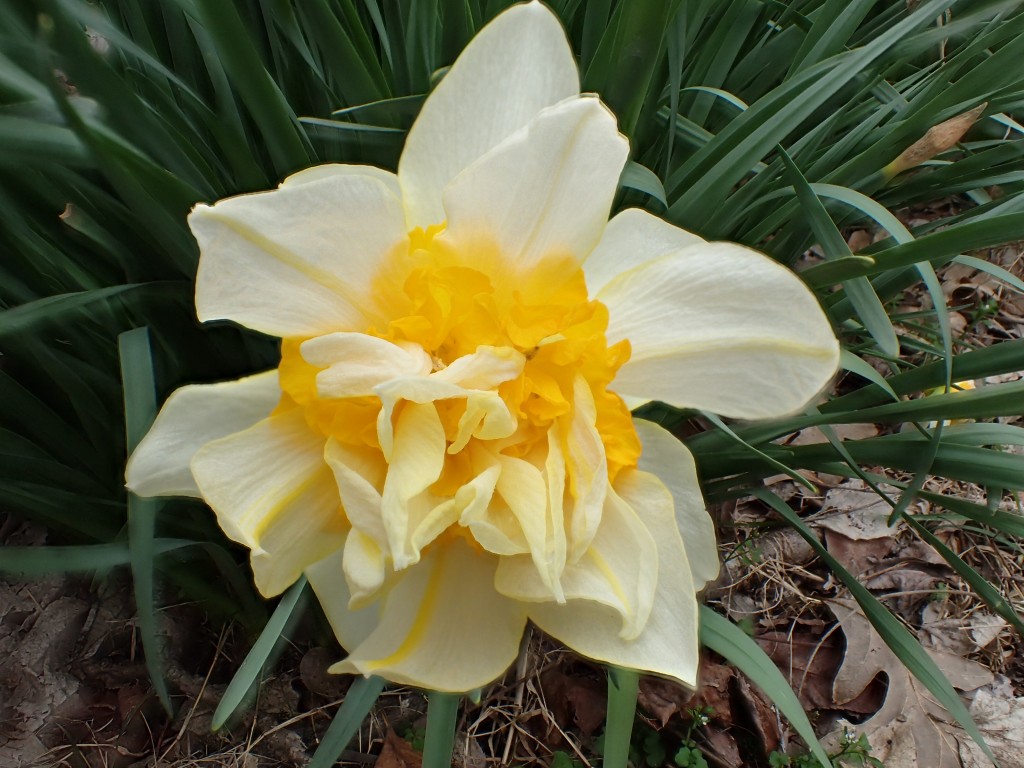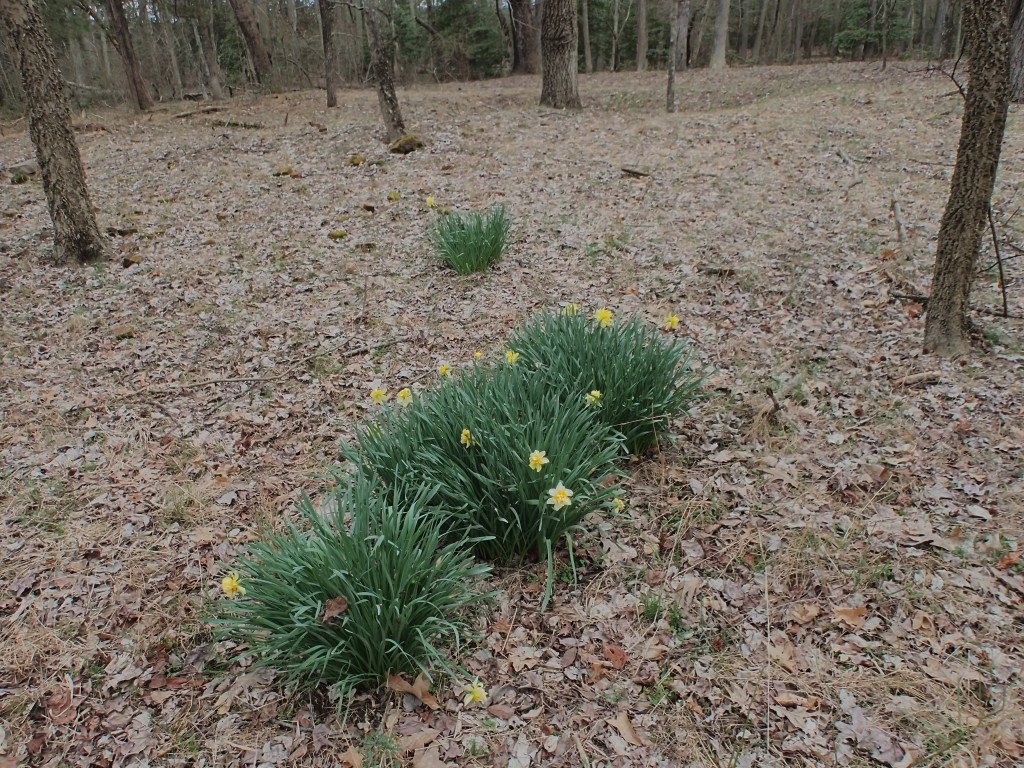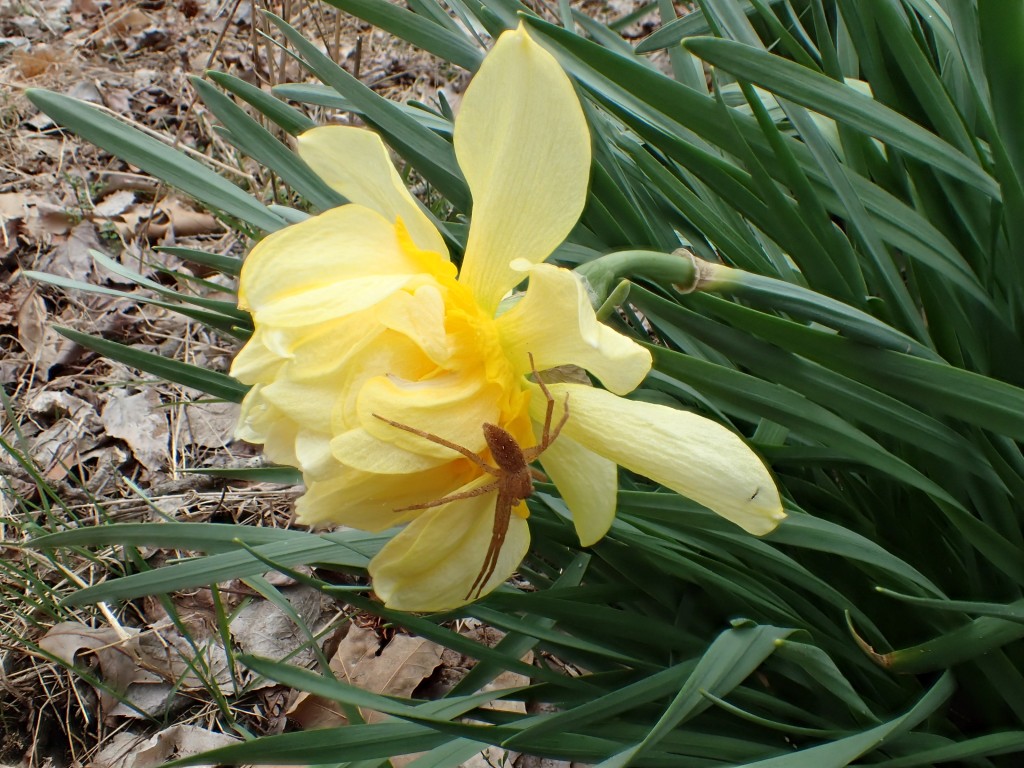Old-growth daffodils?
By Steve Eisenhauer, Regional Director of Protection and Land Stewardship
Deep in the woods at our Harold N. Peek Preserve grow some ancient daffodils. Although perhaps not unlike daffodils sprouting at innumerable other old home sites in many other wooded areas, these daffodils bear reflection.

As the preserve’s namesake, Harold Peek, once told it, the King sisters were the last residents of a house that once stood here. All that is left today is a deep hollow area where the cellar was located, many walnut and hackberry trees (the older ones probably planted by the homesteaders and the younger ones growing as their offspring), and three concrete brick-lined depressions from long-gone silos. As the story goes, the King sisters’ house burned down 80 years ago or so, and they had to move. The fire was suspicious, since the King sisters were away from home at the time and a dispute had been ongoing about a timber harvest by a neighbor who questioned the property line. (I once visited the Cumberland County Historical Society in Millville to find out more details but, other than verifying the King family lived in this general area at the time, I could not locate anything else to substantiate the story.)

So, as far as I can tell, these daffodils were growing here 80 years or so ago. They may have been planted a century or two before that! Referencing the lifespan of daffodils, the literature refers to them as long-lived or “living “indefinitely.” Over time, domestic varieties of daffodils typically spread vegetatively, adding bulbs and crowding themselves to the point where flowering becomes less and less common. As seen in the photo above, in each clump of daffodil plants—that may have hundreds of bulbs at each base—only a few are still flowering. Gardeners will often separate the bulbs to replant them, thus reducing competition for water and nutrients, and stimulating more flowering. The daffodil patches at the King sisters’ home site are in what botanists call a “naturalized” state: they’re not invasive (spreading rapidly and pushing out native species) but are fitting into the forest landscape as a reminder of bygone human activity and as a welcome broadcaster that spring has finally arrived.

I couldn’t help noticing that a few of the blooms had spiders on them. Certain spiders, such as crab and flower spiders, take advantage of the limited color range in the eyesight of insects like bees. The spiders simply wait within or on blooms, in obvious sight of our human eyes, but almost invisible to the insects they’d like to eat. As some of the first flowers to bloom in spring, crab spiders gravitate to them to jump-start their own life-cycle, at the expense of a few insects. The spider on the flower in this photo resembles a six-spotted fishing spider (Dolomedes triton), and seems to be mimicking those other spider species to try to get a meal.
So, whenever you see crowded daffodils growing in fields or forests, with little or no evidence of human residences nearby, take a closer look. The variety or species of daffodil you may be examining may have been one the Pilgrims planted. It may no longer be available to purchase. We may never know if the original bulb planted one or two or three hundred years ago in each patch is still alive today. It may have the prettiest flower you now see. Or it may be long gone, with its countless descendants carrying on its life as identical genetic clones.
